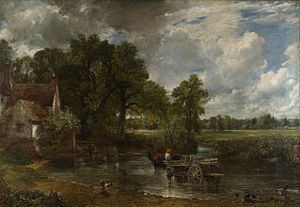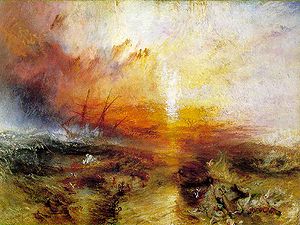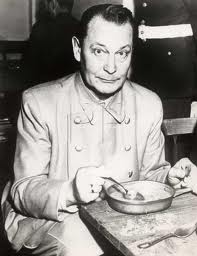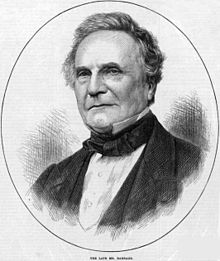In the January 26 edition of the Journal of crime and Punishment I tell the story of Charles Babbage and the difference engine, and how he stole the plans from me, but ran into a problem when I drew up one sheet in mirror, (backwards) so that it was cast in reverse and it nearly bankrupted him.
There is another story, (in the issue which deals with rubber) which tells this story of rubber and the vulcanisation of rubber.
Rubber vulcanisation was patented in the U.K. on 21st November 1843.
Before then I was working as the artists Turner and Constable. Producing original works of art, the originals had to be stamped with a steel seal which was in the possesion of the Royal Academy. It was the practice in those times to "make two copies" but these fakes would not look real unless they had the official stamp. Not to be outdone, I made a new stamp out of rubber, and this served two purposes; to authenticate the original, and to date stamp the vulcanisation process of rubber. It was not important who owned the process, only that it was not owned by the freemasons, or by one of their members. By sharing identities, and everything else including their lack of morals, they negated the very principle of uniqueness and of ownership. A work of art could not be said to be produced by one person, but by a team, and this is not according to the rules of the game. They not only excluded and attempted to control women, they wanted to monopolise the art business, and every other business for the benefit of their members.
It is impossible for me to say which artist, or which year this was done, but I can say the painting still exists, it is famous, and it should be in teh possession of the Queen. Likewise the profits of teh rubber industry, which some say the British stole from the Brazillians.
Although vulcanization is a 19th century invention, the history of rubber cured by other means goes back to prehistoric times. The name "Olmec" means "rubber people" in the Aztec language. Ancient Mesoamericans, spanning from ancient Olmecs to Aztecs, extracted latex from Castilla elastica, a type of rubber tree in the area. The juice of a local vine, Ipomoea alba, was then mixed with this latex to create processed rubber as early as 1600 BC.[5] In the western world, rubber remained a curiosity, although it was used to produce waterproofed products such as Mackintosh rainwear.
Thomas Hancock (1786–1865), a scientist and engineer, invented vulcanization of rubber when he heated a mixture of rubber and sulfur. He patented the process in the UK on November 21, 1843, eight weeks before Goodyear applied for his own UK patent. Charles Goodyear (1800–1860) patented his process in June 15 1844, but claimed that he had discovered vulcanization earlier, in 1839. He wrote the story of the discovery in 1853 in his autobiographical book Gum-Elastica.

The Hay Wain is a painting by John Constable, finished in 1821. The painting depicts a rural scene on the River Stour in Suffolk. It hangs in the National Gallery London, and is regarded as one of the greatest British paintings.[1
The para rubber tree initially grew in South America. Charles Marie de La Condamine is credited with introducing samples of rubber to the Académie Royale des Sciences of France in 1736.[2] In 1751, he presented a paper by François Fresneau to the Académie (eventually published in 1755) which described many of the properties of rubber. This has been referred to as the first scientific paper on rubber.[2]
When samples of rubber first arrived in England, it was observed by Joseph Priestley, in 1770, that a piece of the material was extremely good for rubbing off pencil marks on paper, hence the name rubber. Later it slowly made its way around England.
South America remained the main source of the limited amounts of latex rubber that were used during much of the 19th century. In 1876, Henry Wickham gathered thousands of para rubber tree seeds from Brazil, and these were germinated in Kew Gardens, England. The seedlings were then sent to Ceylon (Sri Lanka), Indonesia, Singapore and British Malaya. Malaya (now Malaysia) was later to become the biggest producer of rubber. About 100 years ago, the Congo Free State in Africa was also a significant source of natural rubber latex, mostly gathered by forced labour. Liberia and Nigeria also started production of rubber.
The commercial source of natural rubber latex is the para rubber tree (Hevea brasiliensis), a member of the spurge family, Euphorbiaceae. This is largely because it responds to wounding by producing more latex, also this means that the tree is able to photosynthesise more.
Other plants containing latex include gutta-percha (Palaquium gutta),[1] rubber fig (Ficus elastica), Panama rubber tree (Castilla elastica),
J.M.W. Turner, The Slave Ship (1840). Oil on canvas. 90.8 × 122.6 cm, Museum of Fine Arts, Boston


Charles babbage. Notice the similarity between him and Herman Goering.
Charles Babbage, FRS (26 December 1791 – 18 October 1871)[1] was an English mathematician, philosopher, inventor and mechanical engineer who originated the concept of a programmable computer.[2] Considered a "father of the computer",[3] Babbage is credited with inventing the first mechanical computer that eventually led to more complex designs.[4] Parts of his uncompleted mechanisms are on display in the London Science Museum. In 1991, a perfectly functioning difference engine was constructed from Babbage's original plans. Built to tolerances achievable in the 19th century, the success of the finished engine indicated that Babbage's machine would have worked. Nine years later, the Science Museum completed the printer Babbage had designed for the difference engine.
There are two other processes which were neatly patented. One was foam rubber, in the name of Dunlop, (Dunlopillo) sold as mattresses through an exclusive arrangement with Farmer's, and the other the Monarch brand, which sold the innerspring mattress through the same exclusive arrangement with the same retail company. Monarch mattresses came from China and are owned by the Baker family (father and son).This lead in turn to the patenting of the wooden (laminated) tennis raquet (with admiral brand nylon monofilament strings) in the Monarch brand name. If any part of this claim is rejected, the whole lot is rejected, no matter how unlikely or convincing it sounds.